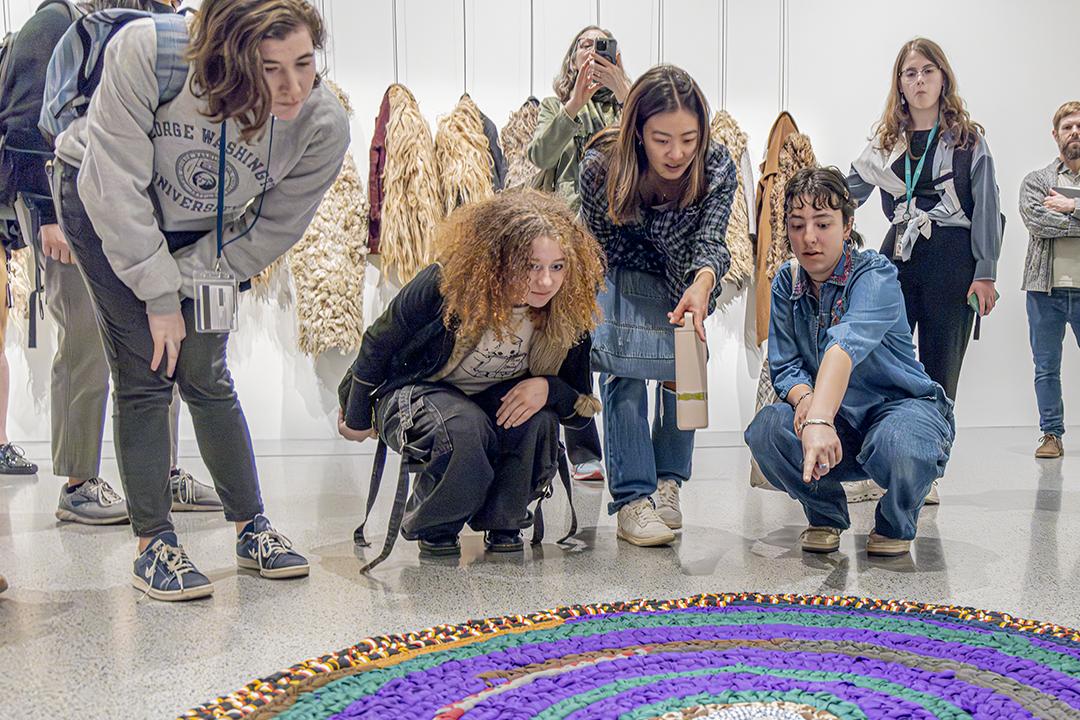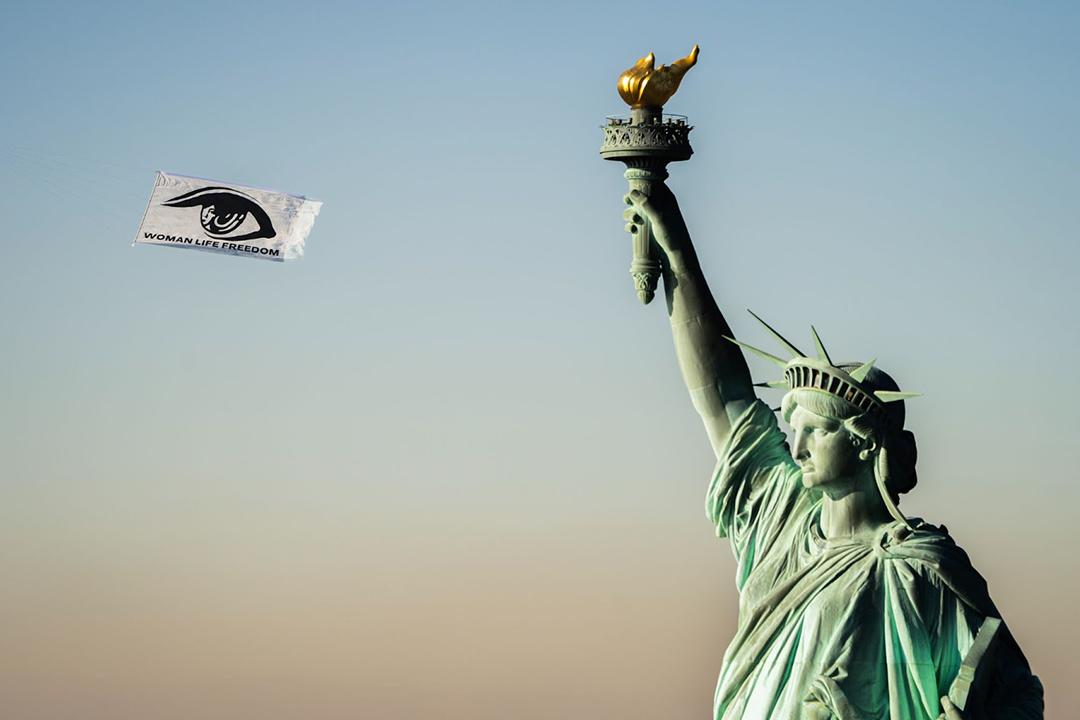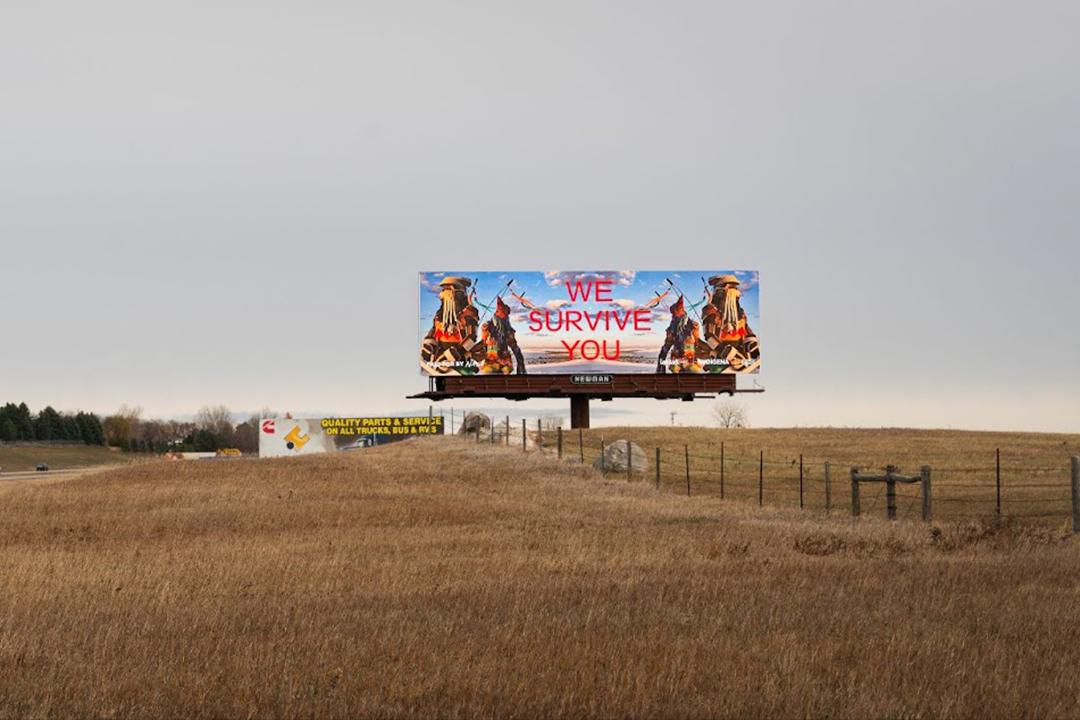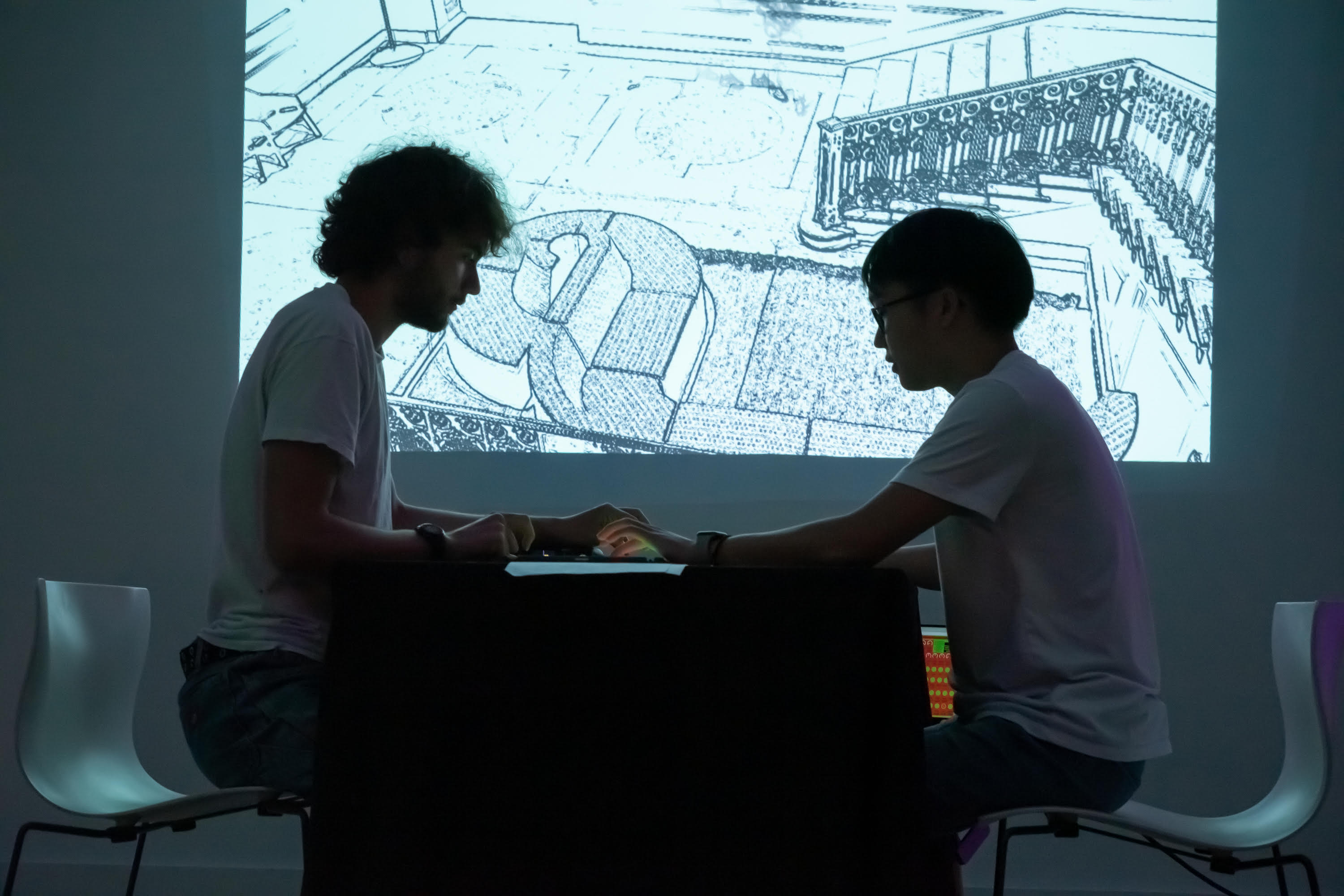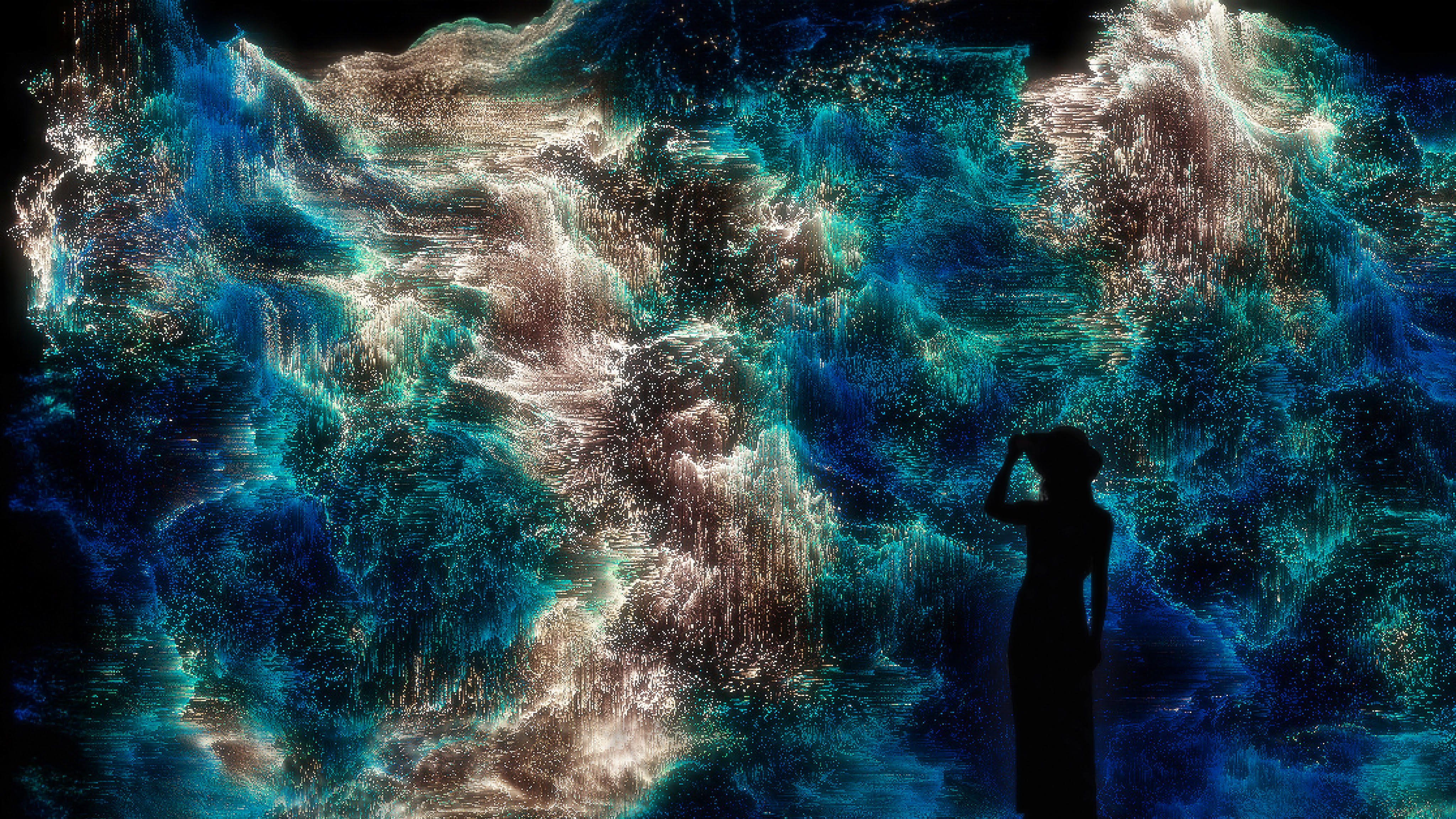The partnership announced last year between George Washington University's Corcoran School of the Arts and Design, housed in the Columbian College of Arts and Sciences, and the National Gallery of Art enters a new phase this year with the beginning of a three-year residency by For Freedoms, an artist-led collective devoted to art’s potential for fostering civic engagement.
A series of public events will mark the residency’s debut early next month.
For Freedoms started with a question about the role artists can play in civil society, according to Eric Gottesman, who co-founded the organization in 2016 with a group of artists including Hank Willis Thomas, Wyatt Gallery and Michelle Woo. That question, in turn, stemmed from a series of other questions, he said.
“What is the role of art in politics? And how do these two realms intersect? These were questions that we all, independently and collectively, saw as integral to the work that we did,” Gottesman said. “As a result, we developed an organization.”
The group was inspired to take its name by a series of paintings by Norman Rockwell illustrating concepts from an address by President Franklin Delano Roosevelt during World War II. The president spoke of “four freedoms”—freedom of speech, of worship, from want and from fear. For Freedoms first organized as a super PAC, but never advocated for specific candidates in political races.
“We were advocating for a set of values that incorporated an antipartisan vision of what society could look like,” Gottesman said. “We invited artists to give their perspective on contemporary issues and politics by inviting them into public space through billboards, public art installations, exhibitions and various events. And the goal of this effort was really to insert political, artistic and critical discourse into public discourse.”
Hundreds of artists have been associated with For Freedoms, including Shepard Fairey, Guerrilla Girls, Jenny Holzer, Rashid Johnson, Christine Sun Kim, Carrie Mae Weems and Ai Weiwei. These and many other artists have created billboards designed to spark conversation and encourage people to participate in civic life. Their work has been displayed in every state of the union as well as Puerto Rico and the District of Columbia.
Some of the billboards have elicited surprising reactions. For example, Jamila El Sahili, a Lebanese artist, raised in Germany and now living in New York, designed a billboard showing Arabic lettering in white on a black background, which in English translates to “human being.” When it was displayed in Michigan, which has a large Arab American population, some people asked if the sign had a connection to terrorism. Gottesman said that raising questions and prompting differing interpretations are part of his group’s intent.
“There’s only a certain extent to which artists can control interpretation of their work,” Gottesman said. “I find the most effective artworks allow viewers to create meaning for themselves. I really believe that creativity is the way to create the society that we want. We all know that in every movement for good in the history of the world, art has been at the forefront. We may not be able to measure that, but I deeply believe that creative thinking is vital for our shared future.”
An interdisciplinary lab
The idea of a shared future is integral to the For Freedoms residency, which will be anchored by the theme of interdependence. The residency will provide an interdisciplinary lab where students, faculty and emerging artists can both make and interpret art. A range of events will be offered, including a series of “gallery interventions” at the Corcoran and at the National Gallery. Experimental approaches to art and civic participation will be emphasized, encouraging students and the public to consider new ways of thinking and creating together.
Lauren Onkey, director of the Corcoran and professor of history and culture, views the For Freedoms residency as an exciting next step in the school’s collaboration with the National Gallery of Art. Having artists in residence, she said, available to students and faculty at GW while also making an impact at the National Gallery of Art, was a priority for the partnership.
“We’re really excited about this,” Onkey said, “because it will be a kind of engine for us to think in new ways about how we create and present our work. We’ll be thinking about the way that the arts intervene in the world and in our understanding of identity and politics. And those are questions that really motivate our students.”
For Freedoms artists might work with a specific class or faculty member on a given project, and collaborate with National Gallery staff on other projects, Onkey added.
Kate Haw, executive officer for programs, exhibitions and audience engagement at the National Gallery of Art, shared Onkey’s enthusiasm.
“The For Freedoms residency ushers in the next phase of our collaboration with the Corcoran, provides a unique opportunity for experimental learning and creative exploration across our communities, and supports the National Gallery’s expanding work with living artists,” Haw said.
Gottesman will also be the William Wilson Corcoran Visiting Professor this year, teaching one course per semester in which he asks students to think about art and civic engagement.
A busy weekend in October
The first weekend in October will be packed with events launching the For Freedoms residency, both at the National Gallery and at the Corcoran. Several billboards will be on display in the Flagg Building. Three public conversations are planned, each with a different set of three people leading it—one from For Freedoms, one from the National Gallery and one from the Corcoran. They will discuss questions intended to spark further exploration throughout the course of the three-year residency. Also at the Flagg Building, there will be a participatory art-making session led by artists in which people will be encouraged to work on their own billboards, kites or flags.
Other events will be held at the National Gallery of Art. On Oct. 4, For Freedoms artist Helina Metaferia and Smithsonian historian Jon Grinspan will take part in a conversation about the Wide Awakes, an abolitionist organization dedicated to electing Abraham Lincoln to the White House in 1860, and the contemporary Wide Awakes, artists working to restore joy to politics.
On Oct. 5, Nekisha Durrett, Hank Willis Thomas and Gottesman will be in conversation with Philip Brookman, a consulting curator of photography at the National Gallery of Art, about the forthcoming book, “Where Do We Go From Here?” (Registration is required for this event.)
But you don’t have to wait until October to see billboards created by For Freedoms artists. One of the group’s projects, Body Freedom for Every(Body), a traveling exhibit of artworks on the theme of bodily autonomy, will be in Washington, D.C., for three days beginning Thursday, Sept. 12, when it will be at GW. The exhibit is in a truck with artwork on the outside by Barbara Kruger. (The following day, it will move to another location.) The truck is traveling across the country as one of 25 mobile projects backed by For Freedoms.
Throughout the weekend, Corcoran students and faculty will team up with the National Gallery and For Freedoms for roundtable discussions to spark new projects and conversations. Key topics include “Body & Sites of Performance,” “Archives & Artifacts,” and “Labor & the Creative Workforce.”
A forthcoming monograph
More than 500 billboards, created by more than 350 artists, are collected in the forthcoming monograph, “For Freedoms: Where Do We Go From Here?” The book will be published Oct. 15 by the Monacelli Press. The billboards represent a broad range of styles and approaches.
Featured billboards include a work by Hank Willis Thomas in Nashville, Tenn., centering the words “Love Over Rules” in white lettering against a red background; a work by Guerrilla Girls in Oklahoma City, Okla., with the words “Dear Boss: Your mansions & fancy stuff cost a lot! No wonder you don’t pay us a living wage!” superimposed on a mountain of neatly wrapped bundles of cash; and Shinique Smith’s “Portrait of Shinique as a Bundle on Rodeo Beach (3 Months Before Cosco Oil Spill), 2007.” Smith’s billboard, displayed at a bus stop in Baltimore, is a photograph of a woman with many bundles strapped to her body on a beach in Marin County, Calif., near where the container ship Cosco Busan spilled more than 53,000 gallons of heavy fuel oil into San Francisco Bay. A message at the top right corner reads “Take Nothing for Granted” in white lettering above the word “Vote” in red.
Some of the billboards are amenable to multiple interpretations; others seem more straightforward, but ultimately prove to be quite subtle, which was the group’s intention.
“That's what we want,” Gottesman said. “Usually, advertisers want you to buy a thing or think a thing or vote for a thing. We wanted people to ask questions and to think critically.”
The For Freedoms residency is the first large-scale public program produced by the reimagined Corcoran School–National Gallery partnership, which initiated 40 educational events since its launch in fall 2023. Since GW acquired the Corcoran School and Flagg Building in 2014, the Corcoran has hosted more than 50 exhibitions and more than 500 performances, talks and other events, reaching 50,000 students and visitors. For more information, please visit corcoran.gwu.edu/national-gallery or RSVP for October events.





